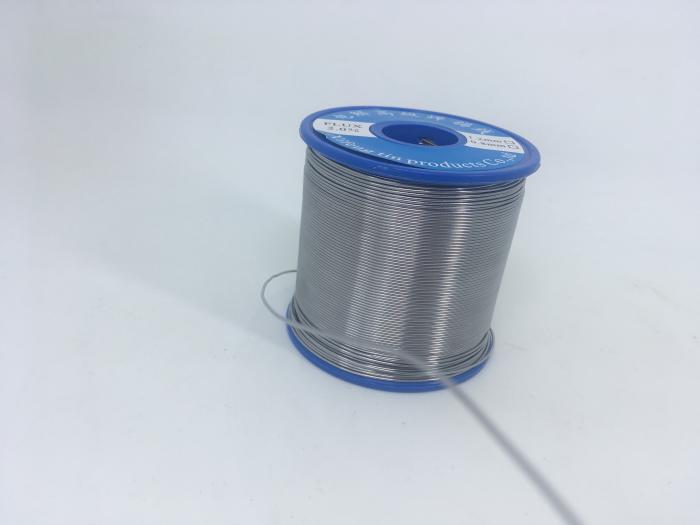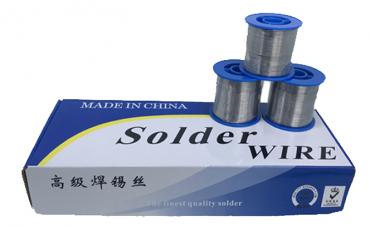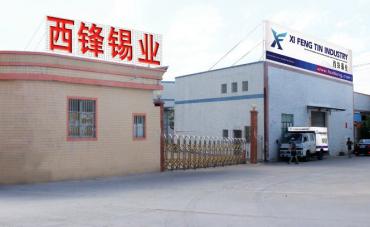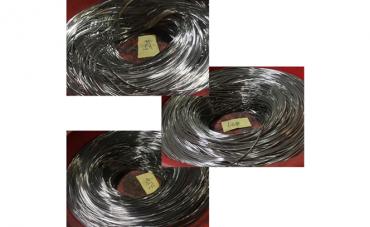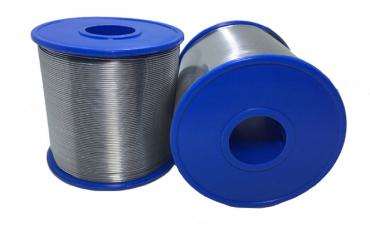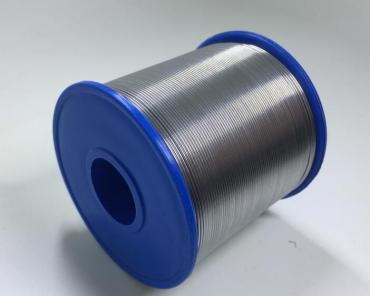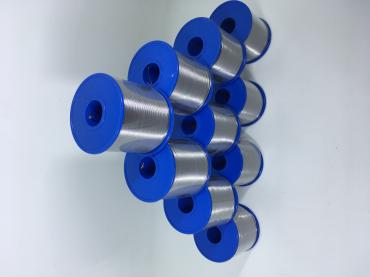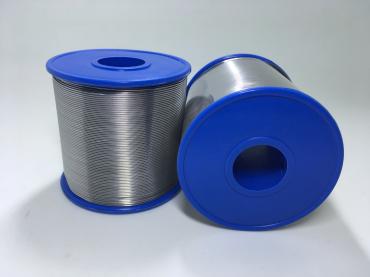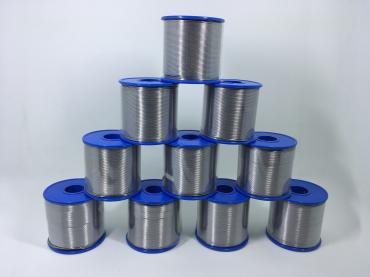| Name: | Leaded solder wire |
| Metal: | Tin / Lead |
| Composition: | 60/40 |
| Core: | Rosin flux |
Product Description
Leaded Solder Wire
Leaded solder wire (Sn-Pb) solders, also called soft solders, are commercially available with tin concentrations between 5% and 70% by weight. The greater the tin concentration, the greater the solder’s tensile and shear strengths. Historically, lead has been widely believed to mitigate the formation of tin whiskers, though the precise mechanism for this is unknown. Today, many techniques are used to mitigate the problem, including changes to the annealing process (heating and cooling), addition of elements like copper and nickel, and the inclusion of conformal coatings. Alloys commonly used for electrical soldering are 60/40 Sn-Pb, which melts at 188 °C (370 °F), and 63/37 Sn-Pb used principally in electrical/electronic work. 63/37 is a eutectic alloy of these metals, which:
- has the lowest melting point (183 °C or 361 °F) of all the tin-lead alloys; and
- the melting point is truly a point — not a range.
In the United States, lead is prohibited in solder and flux in plumbing applications for drinking water use, per the Safe Drinking Water Act (SDWA).Historically, a higher proportion of lead was used, commonly 50/50. This had the advantage of making the alloy solidify more slowly. With the pipes being physically fitted together before soldering, the solder could be wiped over the joint to ensure water tightness. Although lead water pipes were displaced by copper when the significance of lead poisoning began to be fully appreciated, lead solder was still used until the 1980s because it was thought that the amount of lead that could leach into water from the solder was negligible from a properly soldered joint. The electrochemical couple of copper and lead promotes corrosion of the lead and tin. Tin, however, is protected by insoluble oxide. Since even small amounts of lead have been found detrimental to health, lead in plumbing solder was replaced by silver (food-grade applications) or antimony, with copper often added, and the proportion of tin was increased.
The addition of tin—more expensive than lead—improves wetting properties of the alloy; lead itself has poor wetting characteristics. High-tin tin-lead alloys have limited use as the workability range can be provided by a cheaper high leaded alloy solder wire.
Before recent requirements for lead-free products, electronic components on printed circuit (printed wiring) boards (PCBs) were connected to the etched-copper-foil circuit, and hence to other components, by soldered joints created either by hand with a soldering iron using flux-core eutectic or near-eutectic (60/40) wire solder, or by a wave soldering machine which applies a flux beforehand. However, boards using the finest-pitch surface mount technology usually use solder paste applied to each location to be soldered before the component is placed on the board.
Leaded solder wire readily dissolve gold plating and form brittle intermetallics. 60/40 Sn-Pb solder oxidizes on the surface, forming a complex 4-layer structure: tin(IV) oxide on the surface, below it a layer of tin(II) oxide with finely dispersed lead, followed by a layer of tin(II) oxide with finely dispersed tin and lead, and the solder alloy itself underneath.
Lead, and to some degree tin, as used in solder contains small but significant amounts of radioisotope impurities. Radioisotopes undergoing alpha decay are a concern due to their tendency to cause soft errors. Polonium-210 is especially problematic; lead-210 beta decays to bismuth-210 which then beta decays to polonium-210, an intense emitter of alpha particles. Uranium-238 and thorium-232 are other significant contaminants of alloys of leaded solder wire.
Flux is a reducing agent designed to help reduce (return oxidized metals to their metallic state) metal oxides at the points of contact to improve the electrical connection and mechanical strength. The two principal types of flux are acid flux (sometimes called "active flux"), containing strong acids, used for metal mending and plumbing, and rosin flux (sometimes called "passive flux"), used in electronics. Rosin flux comes in a variety of "activities", corresponding roughly to the speed and effectiveness of the organic acid components of the rosin in dissolving metallic surface oxides, and consequently the corrosiveness of the flux residue.
Due to concerns over atmospheric pollution and hazardous waste disposal, the electronics industry has been gradually shifting from rosin flux to water-soluble flux, which can be removed with deionized water and detergent, instead of hydrocarbon solvents.
In contrast to using traditional bars or coiled wires of all-metal solder and manually applying flux to the parts being joined, much hand soldering since the mid-20th century has used flux-core solder. This is manufactured as a coiled wire of solder, with one or more continuous bodies of inorganic acid or rosin flux embedded lengthwise inside it. As the solder melts onto the joint, it frees the flux and releases that on it as well.
Contact our sales team for more details and to buy our leaded solder wires. Main website www.xfsolder.com, Email: xfsolder@gmail.com Whatsapp / Wechat: 008613450770997

